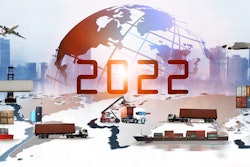
Printed expiration dates are everywhere, even though these labels are at best a partial solution. Their goal may be to consistently communicate to retailers which goods are nearing the printed dates, but they consistently fail to do so.
The main problem is the lack of uniformity. Expiration dates have inconsistent, and sometimes multiple titles; they’re chronically printed in hard-to-spot locations, with almost every manufacturer finding a new and different location to place the crucial information. Barcodes and invoices don’t contain the information either, and suppliers as a whole don’t provide it separately to their clients. The result is that stores with tens of thousands of individual products can’t and don't track when products go bad or where they’re located in the store. Hundreds of millions of metric tons of food go to waste in the United States each year in consequence, with improper spoilage tracking representing a significant portion of that figure. Worldwide, that number tops 1 billion metric tons, with a carbon footprint equivalent to 87% of all road-transportation emissions.
Most retailers are stuck playing defense and damage control, manually combing through their stores and wasting billions of dollars annually and countless man-hours every year to remove expiring goods. Retail management is dominated by simple resignation -- the owners see no better alternative. However, it does not need to be this way.
Advanced technology like RFID chips and machine vision is changing the way we look at end-to-end product tracking. Businesses who seek to overcome these challenges need to leverage these technical solutions and ensure they come in organic and easy-to-use packages.
Current technologies
Spoilage tracking solutions do exist, and have for quite some time. Yet among small retailers, technology adoption is extraordinarily low. In fact, 93% of businesses did not adopt any inventory management solutions at all, let alone expiration date tracking, according to a Supplyve study. One simple explanation for this non-adoption could be that existing systems are unappealing mostly due to human constraints, rather than technological constraints. Tracking software is only as good as its inputs. Entire teams of employees and dedicated training for these employees is necessary even where businesses do adopt software. Employers engage with a constant catch-22 -- either integrate complicated enterprise resource planning (ERP) systems, which take significant labor resources just to manage, or forgo these solutions in favor of the cheaper method of manually tracking using excel templates or pen and paper. Either way, current inventory solutions do not address the underlying problem -- users must continually and manually input information. A massive shift is already occurring though, as the technology that addresses this key problem is just now entering the market.
Modern technology is changing the playing field
Artificial intelligence (AI) machine vision is the first, and best, answer to poor expiration tracking solutions. Indeed, 52% of companies are increasing or even substantially increasing their investment in sensors and automatic identification. Companies have already attempted to integrate these solutions in their stores, mounting cameras throughout the store so that inventory is tracked extremely accurately. For smaller players however, these cameras are neither affordable nor time and user friendly.
Yet even for the bigger players, cost also isn't the only hurdle. Two important issues with expiration dates prevent AI from solving the problem entirely. Machine vision simply does not work when there is nothing to read -- expiration dates can be rubbed out, printed on extremely reflective surfaces, or simply not well printed on the item. Secondly, even if this problem were surmounted, it is still impossible to digitally identify individual products by specific expiration dates. Manufacturers are not integrating the expiration dates into barcodes either. Barcodes have always been intended to convey constant information, with the entire retail industry built toward this expectation; a shift to changing information where consistency is expected would be a massive one, potentially wreaking havoc all along the retail supply chain. Therefore, it is currently impossible for a store owner to know with 100% accuracy which milk carton with the specific and tracked expiration date has been taken off the shelf by a customer, even with machine vision solutions. End-to-end tracking of an individual product, from the moment it enters a store to the moment it leaves, remains an issue. Despite this, the ability to accurately track even a decent percentage of goods is a step in the right direction. Affordable and accurate machine vision solutions that can track individual products with unique expiration dates are going to play a major role in ending the food waste problem. Regardless, end-to-end AI tracking needs a complement, especially for small businesses who cannot afford the large price tag.
This necessity to track every unique item's movement throughout the supply chain is where RFID comes into play. Machine vision’s flaws can be complemented by RFID tags attached to each individual product. Each tag would contain the specific expiration date and product location. However, prohibitively high production price for RFID means the tags are not practical for every product in a wholesaler’s inventory, but the gap is quickly closing as more advanced and cheaper tags have enabled all sorts of capabilities in warehouses and retail settings. When RFID becomes ubiquitous, retailers small and large will need to leverage this technology to track expiration dates successfully. Small retailers will especially benefit as they actually have a leg up when it comes to this market-changing technology. Larger and complex supply chains are often well entrenched in their practices, making it harder to integrate new solutions like RFID and machine vision across the procurement process. Smaller players should use this to their advantage and adopt one or both of these solutions as early as possible.
Raw technology and small businesses
Importantly, businesses who seek to adopt solutions that offer one or both of these solutions will need to be wary of enterprise-level solutions that fall into the same human-error trap. Just because automation software exists does not mean your employees will save time using it. Early market entrants should take great initial pains to make sure their expiration solutions do not just offer functionality, but also ease of use. Again, inventory and expiration data management technology are only as effective as users make it. Big retailers should not underestimate the power of an easy interface for their employees. For the smaller players who cannot easily outsource labor for management of software, this is doubly true. When it comes to small retailers who are starting from nothing, the simplest, most time-efficient interface will win out above all and stop food waste in the most substantive way.

















